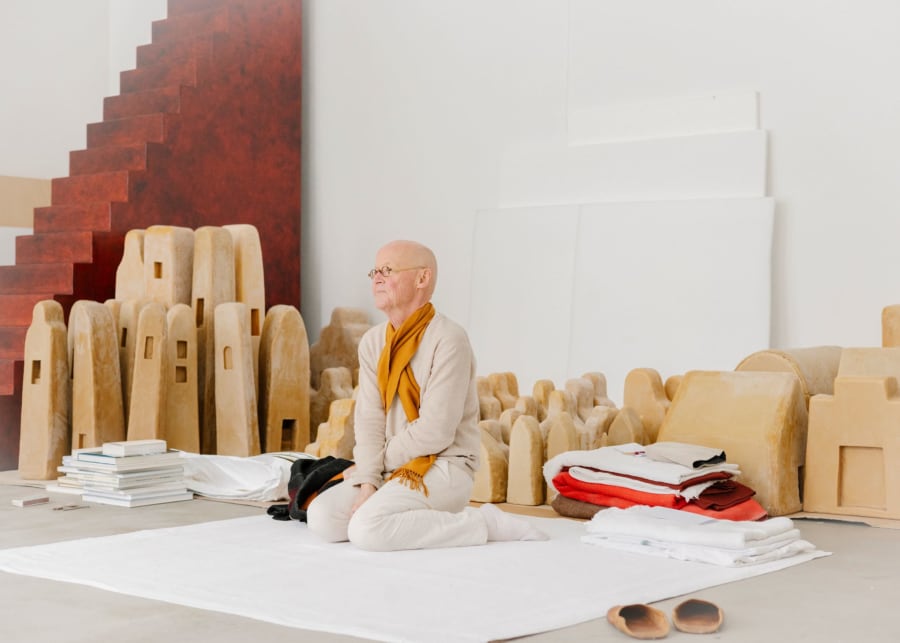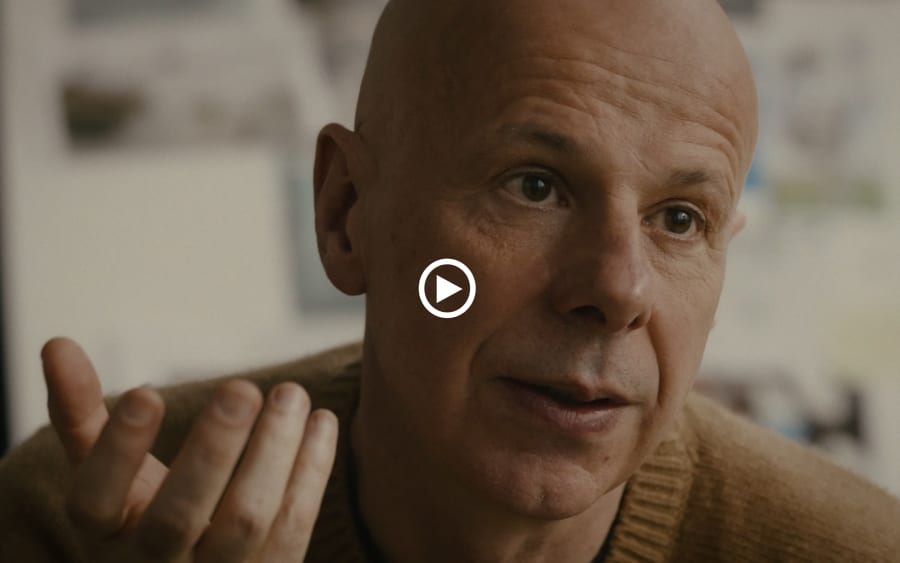‘My first memory is connected to writing a book. I was seven years old, living in Damascus. My mother wanted to be sure I would get my primary school diploma and told me that I should stop reading literature and instead concentrate on school books, in order to study better. I thought to myself that if I could not read, I would write my own book. That is how I started my first novel. I was inspired by a film based on the book Little Women by Louisa May Alcott, in which one of the sisters becomes a novelist. Another important memory from my youth is associated with a different book. I must have been 14 when I read This Proud Heart (1938) by Pearl S. Buck, in which the female character is a sculptor. I am sure that had a subconscious influence on the path I took.
‘When I was a child, I would do embroidery almost every day during our compulsory nap time. Embroidery is a wonderful discipline for anyone who wants to make art – I consider it a major art form in its own right. We had a governess who did découpage and showed us how to do it. That had a huge influence on me, too. I think all my collages come from there.
‘I started painting when I was 25. I taught myself – I did not go to art school. So, I had to convince myself that it was not too late to start, and that I should trust myself. I took learning this language very seriously, working at it every day, all day long. Alongside this, I read the writings of painters extensively, as well as visiting museums in Paris and London.
‘My parents’ apartment in Damascus was a carpet museum. My father was a collector, and carpets adorned the walls, the armchairs, and the sofas, in addition to the floors. No space was left empty, and the influence of this art – so perfect, yet so abstract – was decisive for me. It was abstract: sober, without frills or unnecessary details, saying everything with a clarity and simplicity of means.
‘Everything we encounter in life has an influence on us. Everything we do finds its way into our work in one way or another. I keep my eyes open to all the details of life, art, and everything else. I walk around and take photos. It teaches you to live in the present and to really experience each moment. I can say that the 10 years I spent learning piano as a child have helped me enormously in my work as an editor, for example. I can no longer play the piano, but I know that all that knowledge is inside me and is of great use to me. I can’t explain it, but I can guarantee it is true. Things intertwine and clash, but in a way that is imperceptible to the naked eye. Everything we do and everything we see matters.
‘Vienna is a very important place for my family. My grandfather was the Austro-Hungarian Empire’s dragoman to the Ottoman Empire. He received the Archduke of Habsburg at his home in Damascus and helped all of the Austrian nationals there, some of whom were famous. There were a great many of them there before the First World War, as the Ottoman Empire was an ally of the Austro-Hungarian Empire. My father was educated in Vienna and succeeded his father in his position. We had the Austrian flag on our balcony and on the car. So, I have a sort of intimacy with this country, if I can put it that way. For me, Vienna is more than just a destination; it is as if my whole family were associated with it. My mother’s side also has connections to the city, since her grandfather was Austrian.
‘The Secession in Vienna has such a long history that I am particularly proud to be exhibiting there. It is not a retrospective, but it was important to me to include some of my most iconic sculptures. It also gave me the opportunity to express my love of Beethoven in some collages, which I made to link my work to the rooms there dedicated to this great genius.
‘My challenge now is to continue on my path. The constant wars and prevailing pessimism do not stimulate artistic creation for me. I am lucky enough to be in demand, and that helps me a lot. I like to work for a specific location, with the new perspective and direction it offers. Every place is a new opportunity, a new story.’
Simone Fattal is represented by kaufmann repetto (Milan, New York), Balice Hertling (Paris), Hubert Winter (Vienna), Karma International (Zurich), and Greene Naftali (New York).
‘Simone Fattal: metaphorS’
Secession, Vienna
June 21 - September 8, 2024
Patrick Steffen is Senior Editor, France at Art Basel. He is based in Paris.
English translation: Jacob Bromberg.
All photos by Marion Berrin for Art Basel.
Published on June 24, 2024.


